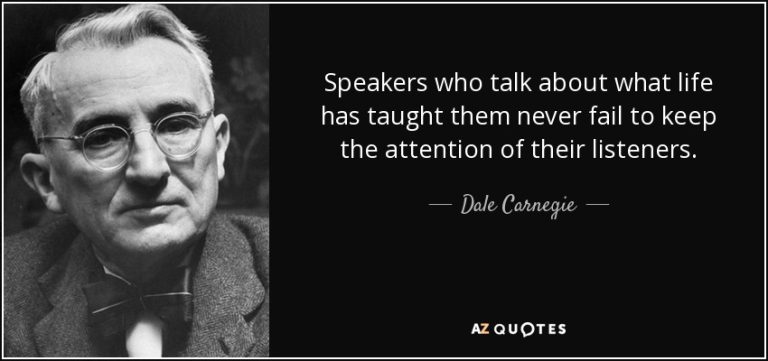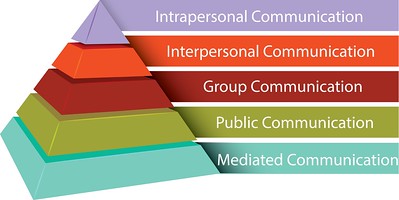How to Learn to Speak Professionally?
To learn to speak professionally, focus on practicing effective communication skills and learning from experienced professionals in your field. By applying these strategies consistently, you can enhance your ability to articulate ideas and interact confidently in professional settings.
Developing strong speaking skills is essential for making a positive impression, building relationships, and advancing in your career. Whether it’s through joining public speaking groups, taking communication courses, or seeking feedback from mentors, there are various ways to refine your professional speaking abilities.
The key is to regularly practice and seek opportunities to speak in professional environments.
**Identifying Your Learning Goals**
One vital step in learning to speak professionally is identifying your learning goals. Setting clear objectives will help you focus on the specific skills you need to develop for effective professional communication.
Identifying Your Learning Goals
Defining your professional speaking objectives, assessing your current speaking skills, and researching available speech training resources are crucial steps in learning to speak professionally. Whether you’re aiming to improve your public speaking abilities, enhance your presentation skills, or communicate more effectively in professional settings, having clear learning goals will pave the way for your success.
Here’s a breakdown of each step:
Define Your Professional Speaking Objectives:
- Reflect on why you want to improve your speaking skills and how it will benefit your career.
- Determine what specific areas you want to focus on, such as speaking confidently, articulating ideas clearly, or engaging with the audience effectively.
- Set measurable goals that align with your aspirations, such as delivering a compelling presentation at an industry conference or becoming a proficient storyteller.
Assess Your Current Speaking Skills:
- Evaluate your strengths and weaknesses in speaking contexts by considering feedback from colleagues, friends, or mentors.
- Pay attention to areas where you lack confidence or experience difficulties, such as staying composed under pressure or organizing your thoughts coherently.
- Identify the specific skills or techniques that need improvement and prioritize them based on their impact on your overall speaking abilities.
Research Available Speech Training Resources:
- Explore various speech training programs, workshops, or courses that cater to your learning goals and fit your schedule and budget.
- Look for reputable institutions, trainers, or online platforms that offer comprehensive training in public speaking, communication skills, or presentation techniques.
- Read reviews, testimonials, and success stories to gauge the effectiveness of each resource and ensure it aligns with your learning style and preferences.
Remember, learning to speak professionally is a journey that requires consistent effort and practice. By defining your objectives, assessing your skills, and researching appropriate resources, you can embark on this journey with confidence and purpose. So, let’s dive in and unlock your full speaking potential!
**Evaluating Speech Training Courses**
Discover effective speech training courses that offer professional learning to enhance your speaking skills. Learn how to speak confidently and impressively with courses tailored to meet your specific needs. Elevate your communication skills and gain a competitive edge in your professional career.
Evaluating Speech Training Courses
Whether you’re a professional looking to enhance your communication skills or someone entering the workforce, learning to speak professionally is crucial. To ensure you choose the most effective speech training course, it’s important to evaluate your options thoroughly. Here are some essential factors to consider:
Comparing Online Courses Vs. In-Person Classes:
- Flexibility: Online courses provide the convenience of learning from anywhere and at your own pace, while in-person classes offer a structured schedule.
- Interaction: In-person classes enable face-to-face interaction with instructors and peers, fostering real-time feedback and collaboration. Online courses often have discussion forums for virtual interaction.
- Cost: Generally, online courses are more affordable than in-person classes, as they eliminate travel and accommodation expenses.
Reading Reviews And Testimonials From Previous Learners:
- Gather insights from individuals who have participated in the course to gain an understanding of their experience.
- Reviews and testimonials can provide valuable information about the course content, instructor effectiveness, and overall satisfaction.
Analyzing Course Curriculum And Learning Materials:
- Check the course curriculum to ensure it aligns with your specific requirements and goals.
- Assess the depth and breadth of the curriculum, examining if it covers essential speech elements such as voice projection, body language, and persuasive techniques.
- Consider the availability and quality of learning materials, including textbooks, workbooks, videos, and audio files.
By carefully evaluating these aspects, you can make an informed decision when selecting a speech training course that best suits your needs. Remember, an effective course will equip you with the skills and confidence required to speak professionally in various settings.
**Developing Your Vocabulary And Language Skills**
Develop proficiency in professional speech by focusing on enhancing vocabulary and language skills. By expanding your word bank and refining your linguistic abilities, you can effectively articulate your thoughts and ideas in a polished manner.
Developing Your Vocabulary And Language Skills
Expanding your vocabulary through reading and listening:
- Read extensively: Immerse yourself in a wide range of written materials such as books, articles, and blogs.
- Make use of a dictionary: When you encounter unfamiliar words or phrases, look them up to broaden your vocabulary.
- Listen to podcasts and audiobooks: Actively listen to spoken content to expose yourself to different accents, vocabulary, and intonations.
- Use vocabulary-building apps: Engage in interactive activities that help you learn new words and their usage.
Practicing pronunciation and intonation:
- Mimic native speakers: Listen carefully and try to imitate the correct pronunciation and intonation patterns.
- Practice speaking out loud: Read aloud from books or articles to improve your fluency and pronunciation.
- Record and listen to yourself: Identify areas for improvement and work on those specific sounds or words.
- Engage in conversational practice: Find language exchange partners or join discussion groups to practice speaking in a professional context.
Enhancing your grammar and syntax:
- Seek grammar resources: Consult grammar books, online courses, or websites that provide explanations and exercises to improve your grammar skills.
- Use grammar-checking tools: Leverage digital tools to help you identify and correct grammatical errors in your writing and speaking.
- Read and analyze well-written texts: Study the sentence structures and grammatical patterns used in professional writing.
- Practice writing regularly: Write emails, essays, or journal entries to refine your writing skills and ensure proper syntax.
Remember, developing your vocabulary and language skills requires consistent effort and practice. By incorporating reading, listening, pronunciation practice, and grammar enhancement strategies into your learning routine, you’ll be able to speak professionally with confidence and clarity.
**Understanding Body Language And Facial Expressions**
Understanding body language and facial expressions is essential for learning to speak professionally. By interpreting nonverbal cues effectively, you can enhance your communication skills and convey your messages more confidently and convincingly.
Understanding Body Language And Facial Expressions
When it comes to professional communication, spoken words are only a part of the equation. Understanding and interpreting body language and facial expressions can provide valuable insights into the intentions and emotions of the speaker. By recognizing different types of non-verbal cues, practicing positive body language techniques, and interpreting facial expressions in different contexts, you can become adept at speaking professionally.
Recognizing Different Types Of Non-Verbal Cues:
- Posture: The way a person stands or sits can convey confidence or insecurity. A straight posture with shoulders back indicates self-assurance.
- Gestures: Hand movements and gestures can emphasize or clarify spoken words. Pay attention to open-handed gestures, as they signify honesty and openness.
- Eye contact: Maintaining eye contact demonstrates attentiveness and interest. However, excessive or prolonged eye contact can come across as aggressive or intimidating.
- Proximity: The distance between individuals during a conversation can convey intimacy or formality. Be aware of personal space and respect boundaries.
- Tone of voice: The tone in which someone speaks can convey their attitude or emotions. Practice using a calm and professional tone to effectively communicate your message.
Practicing Positive Body Language Techniques:
- Good posture: Stand or sit upright, with shoulders relaxed and back straight, to project confidence and professionalism.
- Smiling: A warm smile can help create a positive and engaging atmosphere during conversations. It also conveys friendliness and approachability.
- Active listening: Show that you are actively engaged by nodding your head, maintaining eye contact, and responding appropriately to the speaker.
- Mirroring: Subtly mirroring the body language of the person you are speaking with can create a sense of rapport and connection.
- Use open gestures: Avoid crossing your arms or appearing closed off. Instead, use open gestures that convey receptiveness and inclusiveness.
Interpreting Facial Expressions In Different Contexts:
- Happiness: A genuine smile, with raised cheeks and crinkled eyes, signifies happiness and contentment.
- Surprise: Widened eyes, raised eyebrows, and an open mouth indicate surprise or astonishment.
- Sadness: A lowered brow, downturned lips, and droopy eyes suggest sadness or disappointment.
- Anger: A furrowed brow, narrowed eyes, tensed jaw, and clenched fists are typical signs of anger.
- Confusion: Raised eyebrows and a puzzled expression reflect confusion or uncertainty.
By understanding body language and facial expressions, you can enhance your communication skills and convey professionalism. Paying attention to non-verbal cues will help you build rapport, understand others better, and effectively express yourself in a professional setting. Remember, practice makes perfect, so don’t hesitate to observe and mimic positive body language techniques to become a proficient communicator.
**Improving Voice Projection And Modulation**
Learn to speak professionally by improving voice projection and modulation. Enhance your communication skills by mastering techniques to project your voice confidently and modulate it effectively for various speaking situations.
Techniques For Projecting Your Voice Effectively:
- Stand tall and relaxed, maintaining good posture to allow for optimal airflow.
- Take deep breaths from the diaphragm to support your voice.
- Practice speaking from your chest rather than your throat, as this creates a more powerful and clear sound.
- Use proper articulation and enunciation to ensure your words are easily understood.
- Avoid excessive tension in your jaw or throat, as this can inhibit voice projection.
Varying Pitch And Tone To Engage Listeners:
- Experiment with different pitch ranges to add variety and interest to your speech.
- Emphasize important points by raising the pitch slightly.
- Lower your pitch to convey authority and confidence.
- Incorporate pauses and inflections to engage listeners and maintain their attention.
- Practice vocal exercises to expand your range and control your tone effectively.
Using Vocal Power And Resonance:
- Develop resonance by speaking from your diaphragm and chest, rather than relying solely on your throat.
- Use vocal exercises, such as humming or lip trills, to strengthen your vocal cords and enhance resonance.
- Apply consistent breath support to maintain a steady and strong voice.
- Practice speaking at a volume that is audible and comfortable for the audience in different environments.
- Utilize your resonant spaces, such as the nasal cavity or the mouth, to add depth and richness to your voice.
**Mastering Presentation Skills**
Learn the art of professional speaking with Mastering Presentation Skills. Discover effective techniques to enhance your communication abilities and deliver impactful presentations with confidence.
Mastering Presentation Skills
Creating impactful presentations:
- Begin by clearly defining the objective of your presentation. Understand what you want to achieve and tailor your content accordingly.
- Structure your presentation in a logical and organized manner. Divide it into sections and use concise headings to make it easy for your audience to follow.
- Start with a strong opening that grabs attention and sets the tone for the rest of the presentation. Use interesting statistics, quotes, or anecdotes to captivate your audience.
- Use clear and concise language. Avoid jargon or complex terms that might confuse your audience. Explain concepts in a simple and relatable manner.
Incorporating visual aids and multimedia effectively:
- Utilize visual aids such as charts, graphs, and images to support your points. Visuals can help clarify complex information and make it easier for your audience to understand.
- Choose high-quality and relevant visuals that enhance your message. Avoid cluttering your slides with too much information or irrelevant images. Keep it simple and visually appealing.
- Use multimedia elements like videos or audio clips to engage your audience and add variety to your presentation. Be mindful of the length and relevance of these elements, ensuring they enhance rather than distract from your main points.
Engaging the audience through storytelling techniques:
- Craft compelling narratives that resonate with your audience. Incorporate personal anecdotes or real-life examples to make your content relatable and memorable.
- Use storytelling techniques such as starting with a problem or conflict, building suspense, and offering solutions. This can captivate your audience’s interest and keep them engaged throughout the presentation.
- Consider the pacing and rhythm of your delivery. Vary your tone, pace, and energy to create a dynamic and engaging presentation. Use pauses strategically to emphasize key points or give your audience time to process information.
Remember, mastering presentation skills takes practice and refinement. Continuously seek feedback from others, be open to constructive criticism, and keep honing your skills. With time and dedication, you can become a confident and effective speaker.
Now, go out there and deliver impactful presentations that leave a lasting impression on your audience!
**Joining Public Speaking Clubs And Organizations**
Joining public speaking clubs and organizations is a great way to learn professional speaking skills. These groups provide a supportive environment where you can practice and receive feedback from experienced speakers, helping you improve your communication abilities effectively.
Joining Public Speaking Clubs And Organizations
Public speaking is a crucial skill in today’s professional world. Joining public speaking clubs and organizations is an effective way to enhance your speaking abilities and gain confidence in delivering presentations. Here are some benefits of getting involved with these groups:
- Participating in Toastmasters or similar groups: Toastmasters is a renowned organization that offers a supportive and structured environment for individuals looking to improve their public speaking skills. By joining Toastmasters or a similar group, you can:
- Receive expert guidance from experienced speakers who can provide valuable tips and techniques.
- Engage in regular speaking opportunities, such as prepared speeches and impromptu speaking exercises.
- Develop essential skills like body language, vocal variety, and effective storytelling.
- Receiving constructive feedback from peers: Public speaking clubs and organizations provide a nurturing environment where individuals can receive constructive feedback from their peers. This feedback helps in identifying areas for improvement and honing your speaking style. Some advantages of receiving feedback include:
- Learning from others’ experiences and mistakes.
- Identifying strengths and weaknesses in your speaking delivery.
- Gaining insights on how to captivate and engage your audience effectively.
- Utilizing networking opportunities: Public speaking clubs and organizations often attract professionals from various industries. Networking with like-minded individuals can offer several advantages:
- Building connections with professionals who share similar interests.
- Expanding your professional network, which may lead to career opportunities or collaborations.
- Learning from experienced speakers who can provide insights and guidance on career advancement.
By joining public speaking clubs and organizations, you can develop your speaking skills, receive constructive feedback, and make valuable connections. These experiences will help you speak confidently and professionally in any professional setting. So take the plunge and reap the benefits of joining these fantastic groups!
**Practicing Speaking In Professional Settings**
Learn to speak professionally in various business contexts by practicing effective communication techniques. Develop confidence and clarity in your speech through activities such as role-playing, active listening, and engaging in professional conversations. This will enable you to convey your ideas confidently and make a strong impression in professional settings.
Practicing Speaking In Professional Settings
To truly learn how to speak professionally, it’s crucial to actively practice and immerse yourself in different professional scenarios. This will help you build confidence and improve your communication skills in the workplace. Here are some effective ways to practice speaking in professional settings:
- Role-playing various professional scenarios:
- Gather a group of colleagues or friends and take turns role-playing different workplace scenarios.
- Practice formal introductions, client interactions, and difficult conversations.
- Provide constructive feedback to each other, focusing on clarity, confidence, and professionalism.
- Conducting mock presentations or meetings:
- Prepare and deliver presentations on relevant topics to mimic real professional situations.
- Practice your public speaking skills, using visual aids and engaging storytelling techniques.
- Organize mock meetings to practice effective communication, active listening, and managing discussions.
- Seeking opportunities for public speaking engagements:
- Look for conferences, events, or workshops where you can volunteer to speak.
- Prepare well-researched presentations that showcase your knowledge and expertise.
- Utilize visual aids, interact with the audience, and maintain professionalism throughout.
Remember that regular practice is key to improving your speaking skills. Take advantage of these opportunities to sharpen your communication abilities and gain confidence in professional settings. Keep seeking feedback, refining your approach, and always strive to improve.
**Building Confidence And Overcoming Anxiety**
Learn how to confidently speak professionally and overcome anxiety with effective techniques and strategies. Develop your communication skills and build confidence in public speaking to excel in your career.
Building Confidence And Overcoming Anxiety
Feeling anxious or nervous when speaking professionally is a common challenge that many people face. However, with the right strategies and a gradual approach, it is possible to build confidence and overcome anxiety. In this section, we will explore how to identify the root causes of speech anxiety, implement strategies to manage and reduce anxiety, and gradually build confidence through progressive exposure.
Identifying The Root Causes Of Speech Anxiety:
- Fear of judgment: Many people experience anxiety when speaking professionally due to the fear of being judged negatively by others.
- Lack of experience: Limited experience or opportunities to speak professionally can contribute to feelings of anxiety.
- Past negative experiences: Negative past experiences, such as forgetting key points or receiving criticism, can create a fear of public speaking.
- Self-doubt: Lack of self-confidence and belief in one’s abilities can intensify anxiety.
Implementing Strategies To Manage And Reduce Anxiety:
- Deep breathing exercises: Practice deep breathing techniques to calm yourself before and during speaking engagements.
- Visualization: Visualize successful and confident speaking experiences to retrain your mind for positive outcomes.
- Positive self-talk: Replace negative self-talk with positive affirmations to boost confidence and reduce anxiety.
- Preparing and practicing: Thoroughly prepare and practice your speech or presentation to build confidence and familiarity with the content.
- Seeking support: Connect with supportive individuals or join public speaking groups to gain constructive feedback and encouragement.
Gradually Building Confidence Through Progressive Exposure:
- Start small: Begin by speaking in low-pressure settings, such as within a small group or during casual conversations, to gradually build confidence.
- Set achievable goals: Set realistic and attainable speaking goals, such as speaking for a longer duration or presenting to a larger audience, to gradually stretch your comfort zone.
- Practice regularly: Consistent practice is key to building confidence over time. Seek opportunities to speak professionally whenever possible.
- Analyze and learn from each experience: Reflect on each speaking experience, identifying areas of improvement and celebrating successes.
- Embrace feedback: View feedback as an opportunity for growth and improvement. Accept constructive criticism graciously and implement recommended changes.
By identifying the root causes of speech anxiety, implementing strategies to manage and reduce anxiety, and gradually building confidence through progressive exposure, you can learn to speak professionally with confidence and overcome anxiety. With consistent practice, patience, and a positive mindset, you will gradually become more comfortable and proficient in professional speaking.
So, embrace the journey and believe in your ability to succeed!

Credit: professional.dce.harvard.edu
Frequently Asked Questions For How To Learn To Speak Professionally
How Can I Train Myself To Speak Better?
To improve your speaking skills, practice regularly, focus on pronouncing words clearly, use appropriate body language, and engage in conversations with native speakers.
How Do You Speak Like A Professional Speaker?
To speak like a professional speaker, follow these tips: 1. Use concise sentences that are no longer than 20 words. 2. Write in a way that is SEO friendly, unique, and easy for humans to understand. 3. Avoid starting sentences with certain phrases and words, and refrain from using passive voice.
4. Write in a manner that could pass as human, while still meeting AI writing detection requirements.
How Can I Improve My Speaking Skills Professionally?
To improve your speaking skills professionally, practice regularly by speaking in front of a mirror, join a Toastmasters group, take public speaking courses, and listen to professionals in your field. Additionally, focus on clear enunciation, body language, and maintaining eye contact with your audience.
What Are Some Tips For Speaking Confidently In Professional Settings?
To speak confidently in professional settings, prepare and practice your speech or presentation beforehand, know your audience, maintain good posture, and speak at a steady pace. Additionally, use positive body language, such as smiling and using hand gestures, and focus on delivering your message with conviction and clarity.
Conclusion
To conclude, mastering professional communication skills is essential for success in today’s competitive world. Whether it’s in a business setting or personal interactions, speaking professionally can make a significant difference in how others perceive you. By following the practical tips outlined in this blog post, such as actively listening, using appropriate language, and practicing self-awareness, you can develop your speaking skills and confidently convey your ideas.
Remember to speak with purpose, clarity, and confidence, allowing your words to resonate with your audience. Continue to seek opportunities that allow you to practice and refine your speaking abilities, whether it’s through workshops, networking events, or joining a public speaking group.
With time and practice, you can become a persuasive, articulate communicator, opening doors to new opportunities and enhancing your professional growth. Start implementing these strategies today and watch your speaking abilities soar to new heights.




